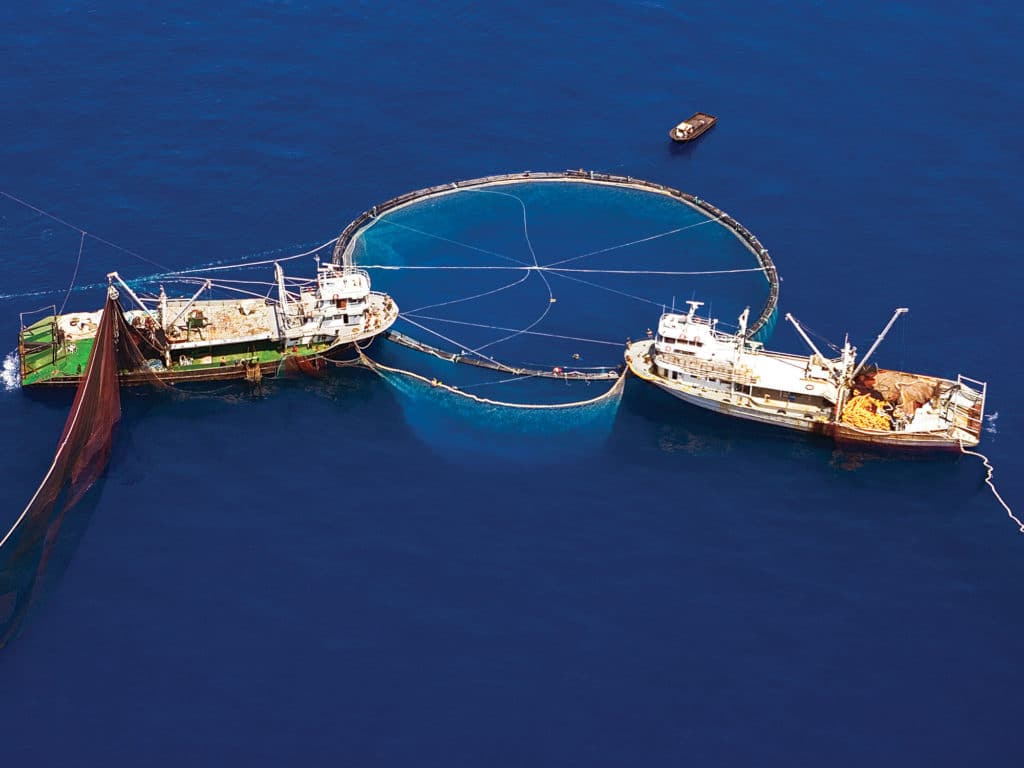
If you take a look at the world’s major tuna and billfish stocks, you can see a broad continuum in terms of their health and how well they are being managed — that is, some stocks seem to be faring pretty darn well in the face of modern, industrialized fisheries, while others are experiencing serious exploitation, verging on the brink of collapse.
In the case of tuna species, for example, skipjack tuna — which happens to be the world’s largest tuna fishery — is in pretty good shape globally. Despite being heavily fished since the early 1950s, skipjack stocks are not considered overfished, and current fishing mortality is largely well below the level where overfishing occurs. On the other hand, Pacific bluefin tuna are at the opposite end of the spectrum. Currently, this species has been depleted by 96 percent of its virgin biomass and is experiencing fishing mortality rates nearly three times greater than what would achieve maximum sustainable yield, which is the goal of sustainable fisheries management. An example can be made with billfish when you compare swordfish to marlin and sailfish. Overall, swordfish stocks are healthy, but some 63 percent of marlin and sailfish stocks are overfished or are experiencing overfishing.
“Most marlin and sailfish harvest is associated as bycatch from directed tuna and swordfish fisheries.”
But why is there such great variation in stock health? A recent paper published in the journal Fish and Fisheries takes a crack at investigating a suite of life-history characteristics and management approaches as predictors of stock vulnerability. In general, they found that stocks with high commercial value, small population sizes prior to the onset of commercial fishing, and that are long-lived or late to mature were more prone to depletion.
This certainly makes sense if you consider the tuna example made earlier. Skipjack tuna live only six to eight years, reach reproductive maturity in less than two years, spawn multiple times a year and are found worldwide. Pacific bluefin, however, are thought to live as long as 26 years, take up to six years to reach maturity, are found primarily in the north Pacific and spawn in discrete areas at certain times of the year. As far as market value goes, you can get a can of tuna for under a buck, while a single piece of choice otoro bluefin sushi can easily set you back 10 times that.
However, these variables don’t seem to be as consistent with billfish, particularly marlin and sailfish. Marlin are thought to live as long as 20 years, but they reach reproductive maturity by about age two, so they spawn at an early age. Marlin also have a much lower market value than other major tunas and swordfish. These inconsistencies could likely be the result of the fact that most marlin and sailfish harvest is associated as bycatch from directed tuna and swordfish fisheries.
In terms of management efficacy, authors of the study reported Total Allowable Catch regulations were the most effective management measure for rebuilding overfished stocks. Examples of TAC-associated success stories include eastern Atlantic bluefin tuna and Atlantic swordfish. Unfortunately, the only other billfish stocks currently subject to TAC regulations are Atlantic blue and white marlin, which were just established in 2013. According to the paper, it’s still too early to determine if these measures have been effective. As such, it appears most billfish stocks continue to take a back seat to more commercially valued species. At this time, we don’t even have assessments for any of the spearfish species in addition to Pacific sailfish and black marlin to give us an idea about the health of these particular stocks.







